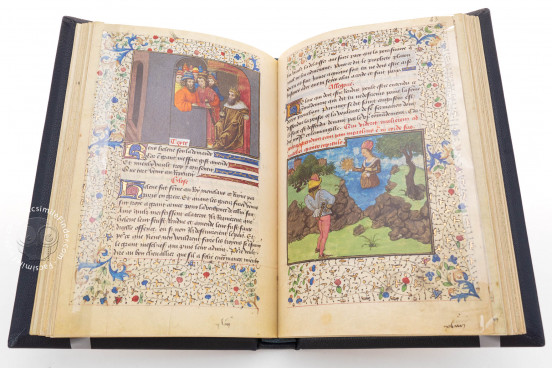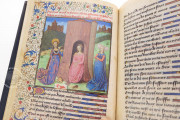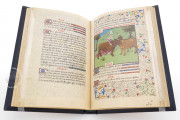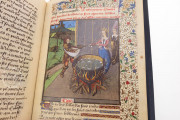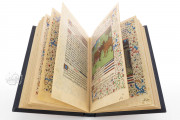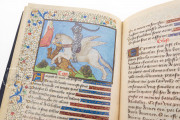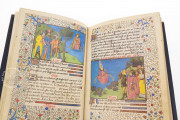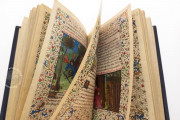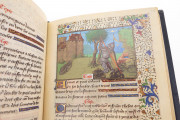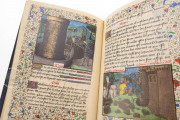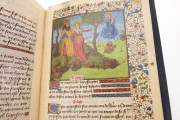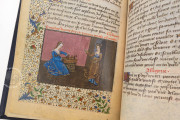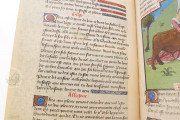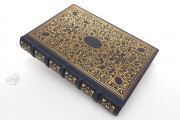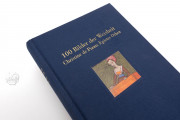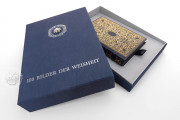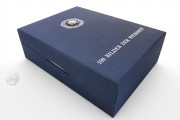In 1368, Christine de Pizan was only four years old when she met the king of France Charles V the Wise. She was introduced to him as the daughter of the Venetian scientist and physician Tomaso Benvenuto de Pizzano, a man of science called by the king to move to Paris with his family. In Paris, Christine could take part in the cultural life promoted by the king Charles V. It was the time of the Hundred Years War, when England and France were fighting over the throne.
Despite the conflict, Paris represented a center of promotion of the arts. The House of Valois attracted international artists to Paris. Charles V founded a precious library, and John Duke of Berry commissioned lavishly illuminated manuscripts. Growing in such a vivid environment, Christine de Pizan learned how to use her intelligence to overcome tragic events.
She was not even twenty-five when, mother of three children, Christine lost her father and her husband. As a widow, she seemed to have no other option than a new marriage, but her intellectual training and her sense of independence made her choose a much more difficult path for a woman of the time. Indeed, Christine found the ways to make a living as a writer.
She was a copyist first, and then an author. She composed love poems, philosophic and moral texts, biographies and autobiographic materials.
Christine de Pizan dedicated her works to the most important personalities, like the king Charles VI and the queen Isabeau of Bavaria, Louis of Orléans and the dukes John of Berry and Philip of Burgundy. She was also a patron of the arts, commissioning illuminated manuscripts of her works for the noble bibliophiles.
Christine De Pizan's Letter of Othéa to Hector and the Hundred Images of Wisdom
The content of Christine de Pizan's books declared the need of education and intellectual independence for women.
Christine de Pizan's famous works include Le Livre de la Cité des Dames, translated as the City of Women, and the text that gave her great popularity in her lifetime, the Letter of Othéa, written in 1400. In this work Othéa, the goddess of wisdom, writes a letter to the fifteen year-old Hector, the Trojan hero.
Othéa gives advice to the young Hector basing her arguments on a hundred examples from the legends on Troy and Classical mythology, providing models of a virtuous and honest life.
In the thirteenth century, writers showed a tendency to refer back to classical authors, for instance Virgil and Ovid. The figures of the antiquity were especially praised when they could embody Christian values.
Christine de Pizan made her letter of Othéa the content of illuminated manuscripts. In addition, she can be considered the designer of the manuscripts as a whole because she instructed the illuminators. The Letter of Othéa inspired lavishly illuminated manuscripts throughout the fifteenth century.
The Manuscript of the Letter of Othéa in the Royal Library at The Hague
The copy of Christine de Pizan's Letter of Othéa kept in the Royal Library at The Hague is one of the finest manuscripts containing this text. It was produced in the second half of the fifteenth century, and it has been suggested that the patron of this manuscript was probably Jacques d'Armagnac or Charles de France, Duke of Berry.
The manuscript presents ninety-eight illuminations displaying highly varied scenes. Bright colors along with gold and silver decorate the illuminations. The high quality of the painting reminds of the art of Barthélemy d'Eyck.
The Piccolomini Master, the Jouvenel circle, and Jean Fouquet influenced the illuminator.
Binding description
Binding
Blue raw silk, bound in the fifteenth century.
We have 2 facsimiles of the manuscript "Hague Epistle of Othéa":
- 100 Bilder Der Weisheit - Christine De Pizans Othea-Brief facsimile edition published by Mueller & Schindler, 2009
- La Epistre Othea de Christine de Pizan - 100 imágenes de sabiduría facsimile edition published by Eikon Editores, 2009

